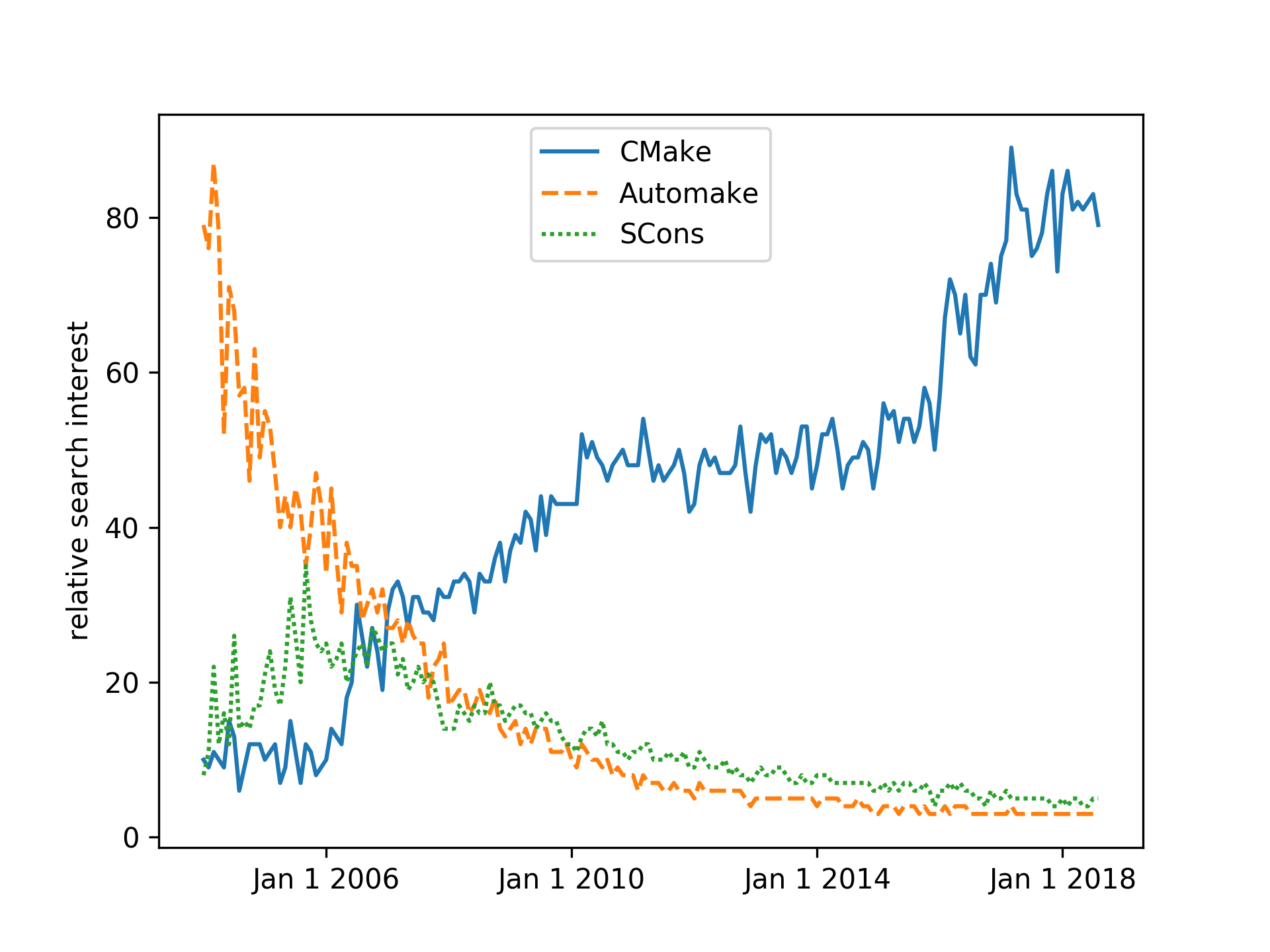Computer software is present in almost every aspect of our daily lives: it triggers our alarm clocks, fuels our communication, banking, weather forecasts, bus schedules, calendars, meetings, travel, photo albums, television, music streaming, social media, dinner and movie reservations, from dawn till dusk.
The software that surrounds us contains many layers: apps are built on top of frameworks, frameworks on top of libraries, libraries use smaller libraries and executables, all the way down to smaller and smaller software components. Libraries and executables in turn need to be built from source code. Often we only see the outermost layer, but all these layers need to be carefully organized and built. This book is about how to build libraries and executables from sources using CMake.
CMake and its siblings, CTest, CPack, and CDash, have emerged as the leading toolset for building software from sources, surpassing in usage and popularity many other similar tools, such as the venerated GNU Autotools and the more recent, Python-based, SCons build system.

The history of the CMake project started in 1999, when Kitware, the company behind its development, was commissioned to design a new set of tools to simplify the day-to-day software work of researchers. The goal was clear: provide a set of tools that would make it easier to configure, build, test, and deploy the same project across different platforms. A fascinating account of the ensuing design choices in the CMake project can be found at https://www.aosabook.org/en/cmake.html.
CMake is a build-system generator, offering a powerful domain-specific language (DSL) to describe what the build system should achieve. In our opinion, this is one of the main strengths of CMake, because it allows the generation of platform-native build systems with the same set of CMake scripts. The CMake software toolset gives developers full control over the whole life cycle of a given project:
- CMake lets you describe how your project, whether building an executable, libraries, or both, has to be configured, built, and installed on all major hardware and operating systems.
- CTest allows you to define tests, test suites, and set how they should be executed.
- CPack offers a DSL for all your packaging needs, whether your project should be bundled and distributed in source code or platform-native binary form.
- CDash will be useful for reporting the results of tests for your project to an online dashboard.
An old adage goes that the deeper you dig, the more stones you will find. For the preparation of this book we have carefully been digging deeper through many software layers, with CMake being our quarry. The number of stones and artifacts that we have hit when building various software components and libraries on various platforms, each with their own quirks, has felt disheartening at times. But we believe we have cleared the ground of many stones and we are happy to share our findings and recipes with you, our readers. There will always be stones left but each stone will bring new insight and we encourage you to share this insight with the community.
































































